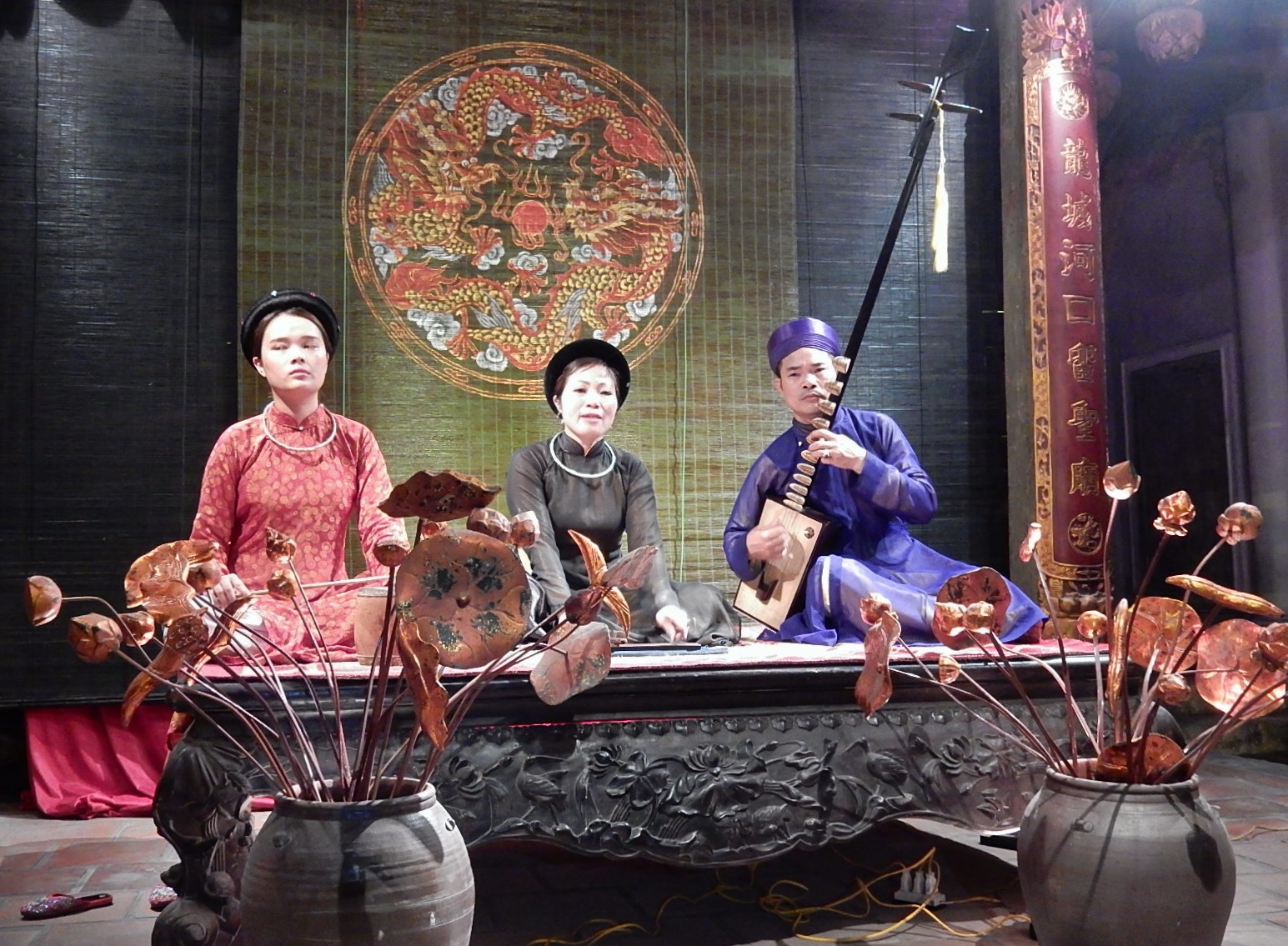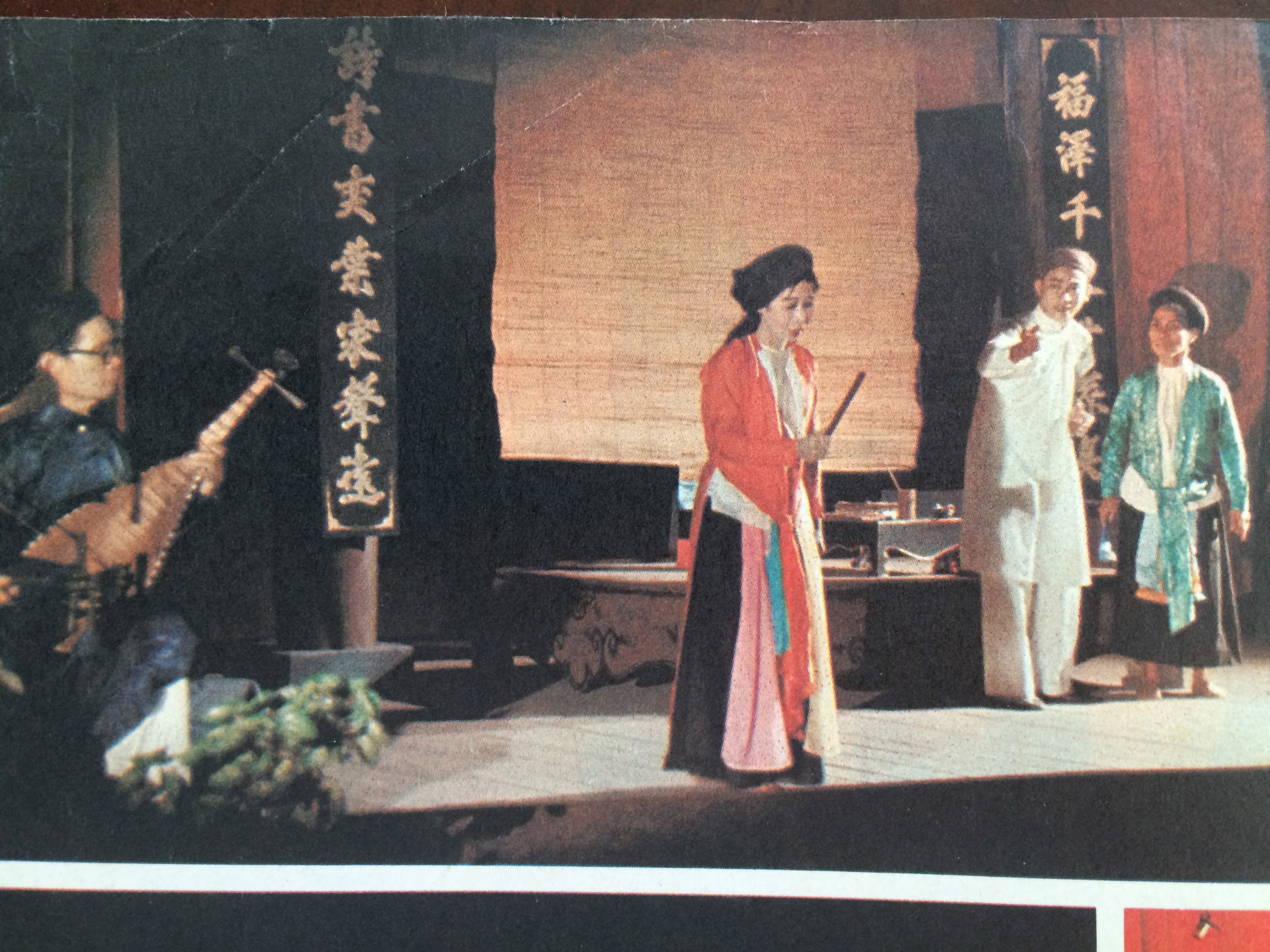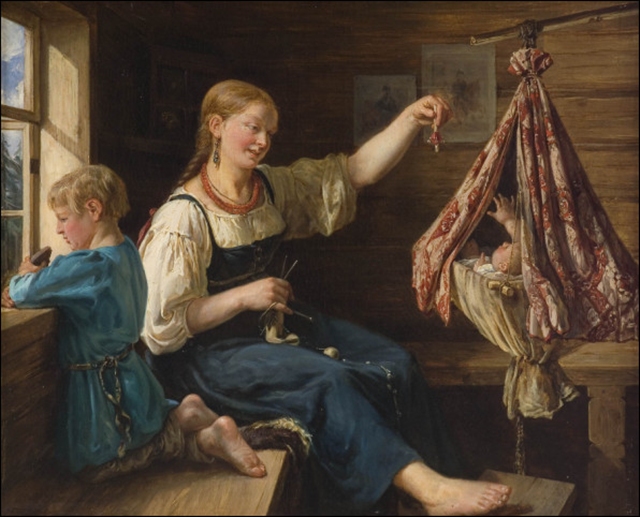|
Xẩm
Xẩm (Chữ Nôm: 眈) or Hát xẩm (咭眈, Xẩm singing) is a type of Vietnamese folk music which was popular in the Northern region of Vietnam but is nowadays considered an endangered form of traditional music in Vietnam. In the dynastic time, xẩm was generally performed by blind artists who wandered from town to town and earned their living by singing in common places. Xẩm artists often play đàn bầu or đàn nhị to accompany the songs themselves, and sometimes they form a band with one singer and others who play traditional instruments such as the drum or phách. The melodies of xẩm are borrowed from different types of Vietnamese folk music such as trống quân or quan họ, while its themes are generally ''The Tale of Kiều'', ''Lục Vân Tiên'', and other popular Vietnamese stories. History and performers The origin of xẩm was dated from the Trần dynasty in the 14th century. During the dynastic time, xẩm was popular in the Northern region of Vietna ... [...More Info...] [...Related Items...] OR: [Wikipedia] [Google] [Baidu] |
Hà Thị Cầu
Hà Thị Cầu (1928 - 3 March 2013) was a famous Vietnamese xẩm singer. Cầu was one of six traditional singers whose works were selected for study and preservation in the late 1990s.Vietnam Courier 1986 -- Page 25 "... on the dan bau (one -stringed zither) was selected to be part of a repertoire to be presented to world audiences. The four remaining airs were also selected to be part of a list of choice items : a hat xam (minstrel's) air sung by Mrs Ha-Thi Cau, " Ha Thi Cau was born in 1921 to an extremely poor family in Nam Dinh province. At an early age, she followed her parents as they wandered from town to town singing for money. Xam lyrics and the music of her parents’ generation was absorbed in her heart and mind. Her performance reflected her love for her homeland and family and her passion for Xam singing. She didn’t know how to read and write but she remembered the lyrics of hundreds of songs. Ha Thi Cau was granted the honorary titles of People’s Artist an ... [...More Info...] [...Related Items...] OR: [Wikipedia] [Google] [Baidu] |
Vietnamese Music
Traditional Vietnamese music encompasses a large umbrella of Vietnamese music from antiquity to present times, and can also encompass multiple groups, such as those from Vietnam's ethnic minority tribes. History Traditional Vietnamese music has been mainly used for religious activities, in daily life, and in traditional festivals. Vietnam's ethnic diversity has also made its music scene diverse. Each of Vietnam's ethnic group owns many unique types of musical instruments. The influence of Chinese culture on Vietnamese music is also quite prevalent, such as maids, harps and erhu. However, traditional Vietnamese music, whilst often compared to traditional Chinese music, is not exactly the same. Royal court music Royal Vietnamese court music first appeared in the 1040s after a successful seaborne raid against Champa led by king Lý Thái Tông in 1044. Cham women were taken as singers, dancers and entertainers for the court. The chronicles recorded that a special palace for Cham w ... [...More Info...] [...Related Items...] OR: [Wikipedia] [Google] [Baidu] |
Chèo
''Chèo'' (, Chữ Nôm: 掉) is a form of generally satirical musical theatre, often encompassing dance, traditionally performed by Vietnamese peasants in northern Vietnam. It is usually performed outdoors by semi-amateur touring groups, stereotypically in a village square or the courtyard of a public building, although it is today increasingly also performed indoors and by professional performers. Chèo stage art is one of the great cultural heritage of the Vietnamese folk treasure. Chèo has been a popular art form of the Vietnamese people for many generations and has fostered the national spirit through its lyrical content. ''Hát chèo''s origins date to the 12th century during the Lý dynasty and has existed in its present form since roughly the 16th century. It derives from folk traditions, and was orally transmitted; unlike courtly theater traditions, it employs no scenery and sparse costumes and makeup. It involves a combination of traditional set pieces and improvisat ... [...More Info...] [...Related Items...] OR: [Wikipedia] [Google] [Baidu] |
Vietnamese Communal Temple
Vietnamese communal temples ( vi, Đình, Chữ Hán: 亭) are typical of buildings found in Vietnam villages, dedicated to worship the village God Thành hoàng, the village founder or a local hero. They also play the role as a meeting place of the people in the community, akin to modern civic centers. See also * * Religious buildings and structures in Vietnam Architecture in Vietnam {{vietnam-reli-stub ... [...More Info...] [...Related Items...] OR: [Wikipedia] [Google] [Baidu] |
Vietnamese Traditional Theatre
Vietnamese may refer to: * Something of, from, or related to Vietnam, a country in Southeast Asia ** A citizen of Vietnam. See Demographics of Vietnam. * Vietnamese people, or Kinh people, a Southeast Asian ethnic group native to Vietnam ** Overseas Vietnamese, Vietnamese people living outside Vietnam within a diaspora * Vietnamese language * Vietnamese alphabet * Vietnamese cuisine * Vietnamese culture See also * List of Vietnamese people A ''list'' is any set of items in a row. List or lists may also refer to: People * List (surname) Organizations * List College, an undergraduate division of the Jewish Theological Seminary of America * SC Germania List, German rugby uni ... * {{disambiguation Language and nationality disambiguation pages ... [...More Info...] [...Related Items...] OR: [Wikipedia] [Google] [Baidu] |
Nhị độ Mai
''Nhị độ mai'' (二度梅, "The Plum Tree Blossoms Twice") is a Nôm poem of Vietnam.Asian and African studies - Volume 9 - Page 201 Slovenská akadémia vied. Kabinet orientalistiky - 1974 "Besides artistic poems, poems were written on the basis of folklore (Thach San) or on topics from Chinese literature (The Plum-tree Blossoms Twice — Nhi do mai). Nikulin calls the first half of the 19th century a "period of Confucian Reaction", ..." Text References External links Nhị Độ Mai Vietnamese Vietnamese poems {{poem-stub ... [...More Info...] [...Related Items...] OR: [Wikipedia] [Google] [Baidu] |
Lullaby
A lullaby (), or cradle song, is a soothing song or piece of music that is usually played for (or sung to) children (for adults see music and sleep). The purposes of lullabies vary. In some societies they are used to pass down cultural knowledge or tradition. In addition, lullabies are often used for the developing of communication skills, indication of emotional intent, maintenance of infants' undivided attention, modulation of infants' arousal, and regulation of behavior. Perhaps one of the most important uses of lullabies is as a sleep aid for infants. As a result, the music is often simple and repetitive. Lullabies can be found in many countries, and have existed since ancient times. Etymology The term 'lullaby' derives from the Middle English ''lullen'' ("to lull") and ''by'' 'e''(in the sense of "near"); it was first recorded circa 1560. A folk etymology derives ''lullaby'' from "Lilith-Abi" (Hebrew for " Lilith, begone"). In the Jewish tradition, Lilith was a demon who ... [...More Info...] [...Related Items...] OR: [Wikipedia] [Google] [Baidu] |
Đồng Xuân Market
Đồng Xuân Market ( vi, Chợ Đồng Xuân; chữ Nôm: 𢄂 同 春) is a market in the center district Hoàn Kiếm of Hanoi, Vietnam. Originally built by the French administration in 1889, Đồng Xuân Market has been renovated several times with the latest in 1994 after a fire which almost destroyed the market. Nowadays, Đồng Xuân Market is the largest covered market of Hanoi where the wholesale traders sell everything from clothes, household goods to foodstuffs. History At the end of the 19th century, the Old Quarter of Hanoi had two main marketplaces, one at Hang Duong street and the other at Hang Ma street. In 1889, these two markets were closed and replaced by the original Đồng Xuân Market which was built by the order of the French administration in 1889 as one of the principal new architectures of Hanoi, together with Long Biên Bridge which was located nearby and completed in 1902. The market was constructed in Hanoi's Old Quarter, only 600 m north of ... [...More Info...] [...Related Items...] OR: [Wikipedia] [Google] [Baidu] |
Hanoi
Hanoi or Ha Noi ( or ; vi, Hà Nội ) is the capital and second-largest city of Vietnam. It covers an area of . It consists of 12 urban districts, one district-leveled town and 17 rural districts. Located within the Red River Delta, Hanoi is the cultural and political centre of Vietnam. Hanoi can trace its history back to the third century BCE, when a portion of the modern-day city served as the capital of the historic Vietnamese nation of Âu Lạc. Following the collapse of Âu Lạc, the city was part of Han China. In 1010, Vietnamese emperor Lý Thái Tổ established the capital of the imperial Vietnamese nation Đại Việt in modern-day central Hanoi, naming the city Thăng Long (literally 'Ascending Dragon'). Thăng Long remained Đại Việt's political centre until 1802, when the Nguyễn dynasty, the last imperial Vietnamese dynasty, moved the capital to Huế. The city was renamed Hanoi in 1831, and served as the capital of French Indochina from 1902 to 194 ... [...More Info...] [...Related Items...] OR: [Wikipedia] [Google] [Baidu] |




